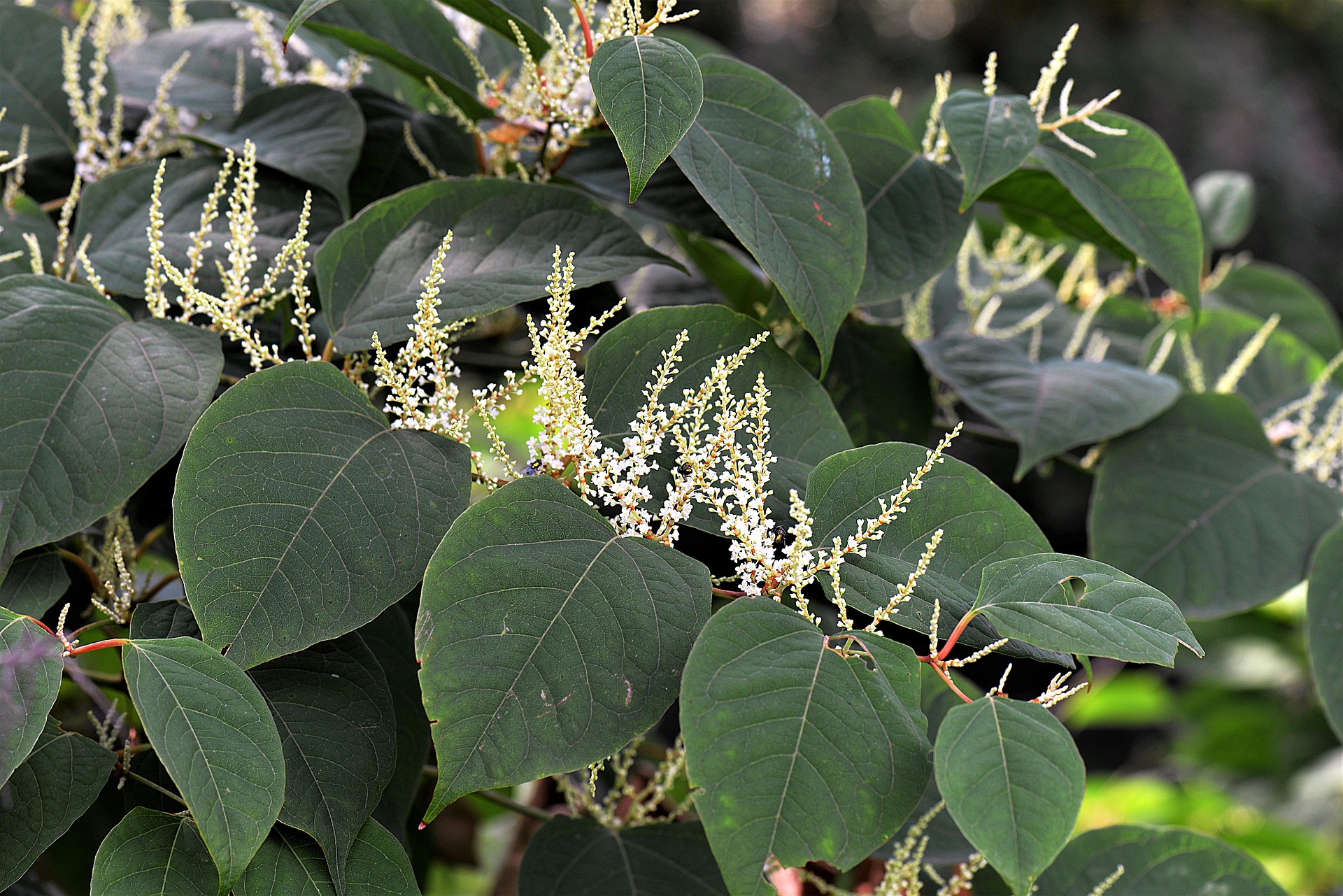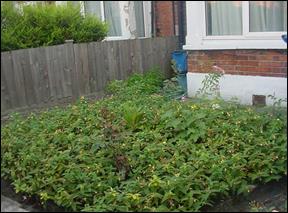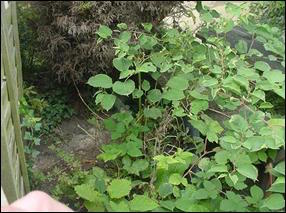Japanese Knotweed, Buildings and Resveratrol
Japanese Knotweed in the UK
Fallopia japonica, Reynoutria japonica and Polygonum cuspidatum, also known as Japanese Knotweed is a large herbaceous plant found in Japan, Korea, and China which was accidentally or deliberately introduced in the UK as garden plants during the 1800s. 1
Having been removed from its natural habitat in Japan, the seeds of the plant are rarely viable in the climate here in the UK. To compensate for this. the plant spreads and let its roots go as much as 3 meters deep into the ground. It can easily outgrow other plants as well with its vertical growth rate of as much as 30cm a week. 2
However, in Japan where it originally came from, knotweed is considered just another plant among other herbs.
Do You need Knotweed advice?

Free Phone 0800 298 5424 today
The so-called threat that is Japanese Knotweed
Japanese knotweed in the UK is said to destroy other native plant species, grows uncontrollably, and forces itself through concrete causing damage to buildings and properties. It is also said that it is expensive and time-consuming to eradicate completely. It’s presence on or in the vicinity of a property can cause diminution in value of the property. 3
This has created opportunities for plant removal and elimination services to earn money due to the impending threat it has on the value of property.
Reason for uncontrolled growth
The Japanese knotweed threat on properties and building may have been exaggerated in the UK. Considered as an invasive plant, it is said to affect property value. 4
The reason for this is its uncontrolled proliferation in the UK due to lack of competition from other species of plants, and predators that feed on the plants, which are commonly found in its native habitat in Japan.5
This means that the only reason why the plant is thriving in the UK is because there is no natural way that mitigates it from growing and spreading, which makes it necessary for humans to intervene through eradication and elimination.
Benefits of Japanese Knotweed
Despite its reputation as an invasive plant in the UK, the herb can actually be beneficial.
Before the plant earned the stigma of being invasive, the plant used to be valuable since all its parts can be put into some good use. Originally introduced as a garden plant, its flowers can be used for decorative purposes or as nectar to bees. Its leaves can be used as food for cattle, and its stems were used for making matches. 6
However, the most valuable part of the plant is its roots. The roots of the said herb are popularly used in Chinese medicine for thousands of years due to its high levels of resveratrol. Resveratrol is chemical compound is a stilbenoid and a phytoalexin which is naturally found in red wine, grapes, peanuts, some berries, and the roots of Japanese knotweed. The said chemical can be commercially extracted from the roots of the plant.7 8
Resveratrol is known to exhibit a wide range of beneficial properties, among these is its capability as an anticancer agent, a platelet anti-aggregation agent (anti-clotting), as an antioxidant, antiaging, anti-frailty, anti-inflammatory, antiallergenic, and other properties beneficial to health. These beneficial biological properties have been extensively studied in humans and animals both in vitro and in vivo.9 10
Friendly, helpful Knotweed Advice

Free Phone 0800 298 5424
Swansea University and the largest field trial on the control of Japanese knotweed
Swansea University carried out the world’s largest field trial on the control of Japanese knotweed and after three years of research concluded that eradication was not possible. The researchers also found that applying the wrong type of herbicides at the wrong time of the year leads to greater herbicide use and environmental impacts.11
Conclusion

Japanese knotweed is considered as an invasive plant in the UK due to its rapid growth and ability to grow in concrete which are said to affect the integrity of the structures of buildings. Its growth has remained unmitigated due to the lack of natural predators and competition from other species. This so-called problem caused by the plant has created opportunities for services offering plant removal and elimination which can cost thousands of pounds.
However, a quick review of its history on why it was introduced in the UK, and how it was treated as a valuable plant, before earning the moniker as an invasive plant, has led us to conclude that the said plant can actually be considered as an asset. The plant itself is considered valuable due to its viable commercial properties, particularly for the extraction of resveratrol which is found in its roots, as well as the many other uses of its plant parts. Although, when it is found growing in a garden of a house you wish to purchase it is not an asset.
Japanese Knotweed is a problem as mortgage lenders are reluctant to give mortgages to people who are wishing to buy a property where knotweed is present.
References
1 Bailey, J. “Japanese Knotweed”. Department of Genetics and Genome Biology. Retrieved from https://www2.le.ac.uk/departments/genetics/people/bailey/res/res
2 Mclean, S. “Identification of the presence and impact of Japanese knotweed on development sites.” Journal of Building Appraisal. Vol 5. Issue 4. (2010) Pp 289-292. Retrieved from
3 Reaves, E. Thugs, knotweed and nuisance. Environment Journal. (2017) Retrieved from https://environmentjournal.online/articles/thugs-knotweed-nuisance/
4 Mclean, S. “Identification of the presence and impact of Japanese knotweed on development sites.” Journal of Building Appraisal. Vol 5. Issue 4. (2010) Pp 289-292. Retrieved from https://link.springer.com/article/10.1057/jba.2010.2
5 Maurel, M.; Fujiyoshi, M. et al. “Biogeographic comparisons of herbivore attack, growth and impact of Japanese knotweed between Japan and France”. Journal of Ecology. Vol. 101. Issue (2012). Retrieved from https://besjournals.onlinelibrary.wiley.com/doi/full/10.1111/1365-2745.12026
6 Bailey, J. “Japanese Knotweed”. Department of Genetics and Genome Biology. Retrieved from https://www2.le.ac.uk/departments/genetics/people/bailey/res/res
7 Chen, H; Deng, Q. et al. “Glucose oxidase-assisted extraction of resveratrol from Japanese knotweed (Fallopia japonica)”. New Journal of Chemistry. Issue 9. (2016) Retrieved from http://pubs.rsc.org/en/content/articlelanding/2016/nj/c6nj01294a#!divAbstract
8 Chen, H.; Tuck, T. et al. “Quality Assessment of Japanese Knotweed (Fallopia japonica) Grown on Prince Edward Island as a Source of Resveratrol”. Journal of Agricultural and Food Chemistry. 61(26) 2013. Pp 6383-6392. Retrieved from https://pubs.acs.org/doi/abs/10.1021/jf4019239
9 Gambini, J.; Inglés, M. et al. “Properties of Resveratrol: In Vitro and In Vivo Studies about Metabolism, Bioavailability, and Biological Effects in Animal Models and Humans.” Oxidative Medicine and Cellular Longevity. (2015). Retrieved from https://www.ncbi.nlm.nih.gov/pmc/articles/PMC4499410/
10 Markus, M.A. and Morris, B.J. “Resveratrol in prevention and treatment of common clinical conditions of aging”. Clinical Interventions in Aging. (2008) pp 331-339. Retrieved from https://www.ncbi.nlm.nih.gov/pmc/articles/PMC2546476/
11. Knotweed "cannot be eradicated" Swansea Uni trial shows BBC News 25 April 2018 http://www.bbc.co.uk/news/uk-wales-south-west-wales-43882916
